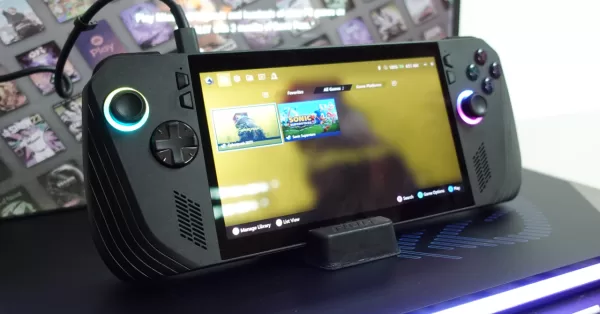ASUS ROG Ally X Hands-on Impressions | A Proper Steam Deck Competitor?
The ROG Ally X has some key upgrades that make it a worthy handheld gaming contender.

While we got to see the device a bit during Computex 2024, we finally got a proper hands-on experience with the ASUS ROG Ally X. This is courtesy of ASUS Philippines as they recently invited tech and games media to try out the ROG Ally X at their HQ.
Last year, ASUS released the first-generation Ally in the Philippines. I got to review that device, and while I was surprised at how good it is, I did note that it’s a great pick for a certain type of gamer as there are still some points of improvement, especially regarding its design and battery life.
For the Ally X, ASUS seems to have made changes that specifically target some of the points I mentioned. Specifically, the Ally X now has improved analog sticks, updated I/O, and a larger battery. With these improvements, is the ROG Ally X now a proper Steam Deck competitor?

To start off, let’s look at the Ally X’s design. Instead of the predominantly white color scheme of the first-generation Ally, this new model now has a mostly matte black color. There won’t be any other color options for this which might disappoint those who prefer a more eye-catching gaming handheld. If you ask me though, I prefer this black colorway as I’m not a big fan of white as it is much easier to get dirty.
While the overall design is pretty similar (down to the back buttons on the left and right sides), ASUS says that the ROG Ally X should be easier and more comfortable to grip. I can’t give a verdict on that yet as I’ll need to test out the handheld for longer, but in my hands-on time with it, the Ally X seems to feel quite comfortable to use as its easy to grip and hold. Do note that it is a bit heavier to accommodate the larger battery.

What is a big change this time is the inclusion of two USB C ports, with one being USB 4 (Thunderbolt 4 compatible) and the other being USB 3.2 Gen2. This is a change that’s very much welcome as the previous generation Ally only had one USB C 3.2 Gen2 port as it had ASUS’ proprietary XGM Port.
While that XGM Port was useful for those with an ROG XG Mobile, having two USB C ports is a much better choice for most users. After all, this makes connectivity way easier, especially for those who want to use the Ally X as a desktop replacement or for gaming on a TV.
Another big change that ROG highlighted is the updated analog sticks. Specifically, the analog sticks are now said to be Xbox controller equivalent joystick modules. While I only tried them out for a bit, the analog sticks did feel quite good as someone used to proper console controllers.
What I wasn’t able to test out fully are the buttons. The previous ROG Ally had this issue where the buttons got stuck while pressing them down. Hopefully this has been addressed.
What didn’t change is the CPU. The ROG Ally X still uses the Ryzen Z1 Extreme processor on the higher-end ROG Ally, though there is no option for a Ryzen Z1 anymore.
This should mean that the Ally X’s gaming performance will be broadly similar to the previous generation model, though there should be some improvements thanks to the option for up to 24GB of RAM. As for storage, the Ally X also has a microSD card slot, along with a 1TB M.2 2280 SSD. Yes, this means the Ally X has a more standard-sized SSD, meaning it should be easier to upgrade.
The biggest change when it comes to its internals is the larger 80Whr battery – that’s twice the size of the previous generation ROG Ally. This should mean much longer battery life, so hopefully it means the Ally X can play on performance mode for longer.
Also getting an upgrade is the Armoury Crate software. This was another thing that held back the previous ROG Ally. Again, my time with the Ally X was short so I wasn’t able to explore the handheld’s updates software.
Speaking of software, this handheld still runs on Windows 11. From the looks of it, the Windows experience should still be mostly the same as the previous model. As such, it won’t be the smoothest day-to-day experience, though hopefully the improved Armoury Crate makes up for that.

In my recent hands-on, I found that the ROG Ally X has plenty of improvements where it matters, including the design and battery life. And while the processor is the same, it should have better performance thanks to the extra RAM.
For now, I can’t fully recommend this handheld yet, but it does seem to hold a lot of promise. As such, we’re excited to test it out in daily use to see if it’s now a worthy Steam Deck alternative.
The ROG Ally X is coming to the Philippines on August 23, though there’s no word yet on a price tag.





